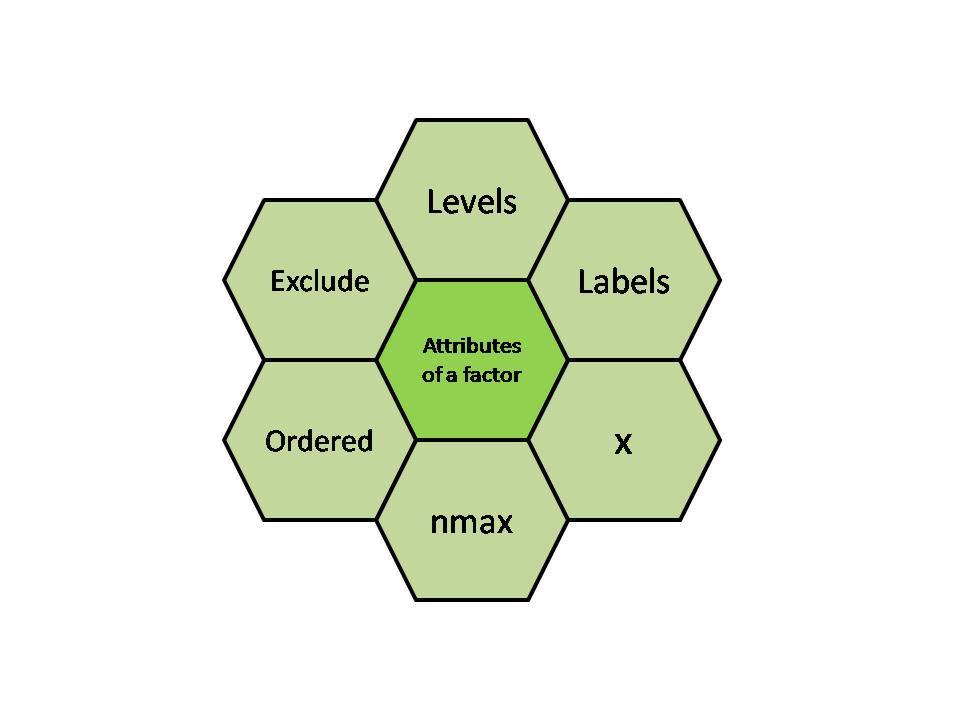How To Create Factors In R
Factors in R Programming Language are data structures that are implemented to categorize the data or represent categorical data and store it on multiple levels.
They can be stored as integers with a corresponding label to every unique integer. Though factors may look similar to character vectors, they are integers and care must be taken while using them as strings. The factor accepts only a restricted number of distinct values. For example, a data field such as gender may contain values only from female, male, or transgender.
In the above example, all the possible cases are known beforehand and are predefined. These distinct values are known as levels. After a factor is created it only consists of levels that are by default sorted alphabetically.
Attributes of Factors in R Language
- x: It is the vector that needs to be converted into a factor.
- Levels: It is a set of distinct values which are given to the input vector x.
- Labels: It is a character vector corresponding to the number of labels.
- Exclude: This will mention all the values you want to exclude.
- Ordered: This logical attribute decides whether the levels are ordered.
- nmax: It will decide the upper limit for the maximum number of levels.

Creating a Factor in R Programming Language
The command used to create or modify a factor in R language is – factor() with a vector as input.
The two steps to creating a factor are:
- Creating a vector
- Converting the vector created into a factor using function factor()
Examples: Let us create a factor gender with levels female, male and transgender.
R
x < - c ( "female" , "male" , "male" , "female" )
print (x)
gender < - factor (x)
print (gender)
Output:
[1] "female" "male" "male" "female" [1] female male male female Levels: female male
Levels can also be predefined by the programmer.
R
gender <- factor ( c ( "female" , "male" , "male" , "female" ),
levels = c ( "female" , "transgender" , "male" ));
gender
Output:
[1] female male male female Levels: female transgender male
Further one can check the levels of a factor by using function levels().
Checking for a Factor in R
The function is.factor() is used to check whether the variable is a factor and returns "TRUE" if it is a factor.
R
gender <- factor ( c ( "female" , "male" , "male" , "female" ));
print ( is.factor (gender))
Output:
[1] TRUE
Function class() is also used to check whether the variable is a factor and if true returns "factor".
R
gender <- factor ( c ( "female" , "male" , "male" , "female" ));
class (gender)
Output:
[1] "factor"
Accessing elements of a Factor in R
Like we access elements of a vector, the same way we access the elements of a factor. If gender is a factor then gender[i] would mean accessing ith element in the factor.
Example:
R
gender <- factor ( c ( "female" , "male" , "male" , "female" ));
gender[3]
Output:
[1] male Levels: female male
More than one element can be accessed at a time.
Example:
R
gender <- factor ( c ( "female" , "male" , "male" , "female" ));
gender[ c (2, 4)]
Output:
[1] male female Levels: female male
Example:
R
gender <- factor ( c ( "female" , "male" , "male" , "female" ));
gender[-3]
Output:
[1] female male female Levels: female male
Modification of a Factor in R
After a factor is formed, its components can be modified but the new values which need to be assigned must be at the predefined level.
Example:
R
gender <- factor ( c ( "female" , "male" , "male" , "female" ));
gender[2]<- "female"
gender
Output:
[1] female female male female Levels: female male
For selecting all the elements of the factor gender except ith element, gender[-i] should be used. So if you want to modify a factor and add value out of predefines levels, then first modify levels.
Example:
R
gender <- factor ( c ( "female" , "male" , "male" , "female" ));
levels (gender) <- c ( levels (gender), "other" )
gender[3] <- "other"
gender
Output:
[1] female male other female Levels: female male other
Factors in Data Frame
The Data frame is similar to a 2D array with the columns containing all the values of one variable and the rows having one set of values from every column. There are four things to remember about data frames:
- column names are compulsory and cannot be empty.
- Unique names should be assigned to each row.
- The data frame's data can be only of three types- factor, numeric, and character type.
- The same number of data items must be present in each column.
In R language when we create a data frame, its column is categorical data and hence a factor is automatically created on it.
We can create a data frame and check if its column is a factor.
Example:
R
age <- c (40, 49, 48, 40, 67, 52, 53)
salary <- c (103200, 106200, 150200,
10606, 10390, 14070, 10220)
gender <- c ( "male" , "male" , "transgender" ,
"female" , "male" , "female" , "transgender" )
employee<- data.frame (age, salary, gender)
print (employee)
print ( is.factor (employee$gender))
Output:
age salary gender 1 40 103200 male 2 49 106200 male 3 48 150200 transgender 4 40 10606 female 5 67 10390 male 6 52 14070 female 7 53 10220 transgender [1] TRUE
How To Create Factors In R
Source: https://www.geeksforgeeks.org/r-factors/
Posted by: toshmajessis.blogspot.com

0 Response to "How To Create Factors In R"
Post a Comment